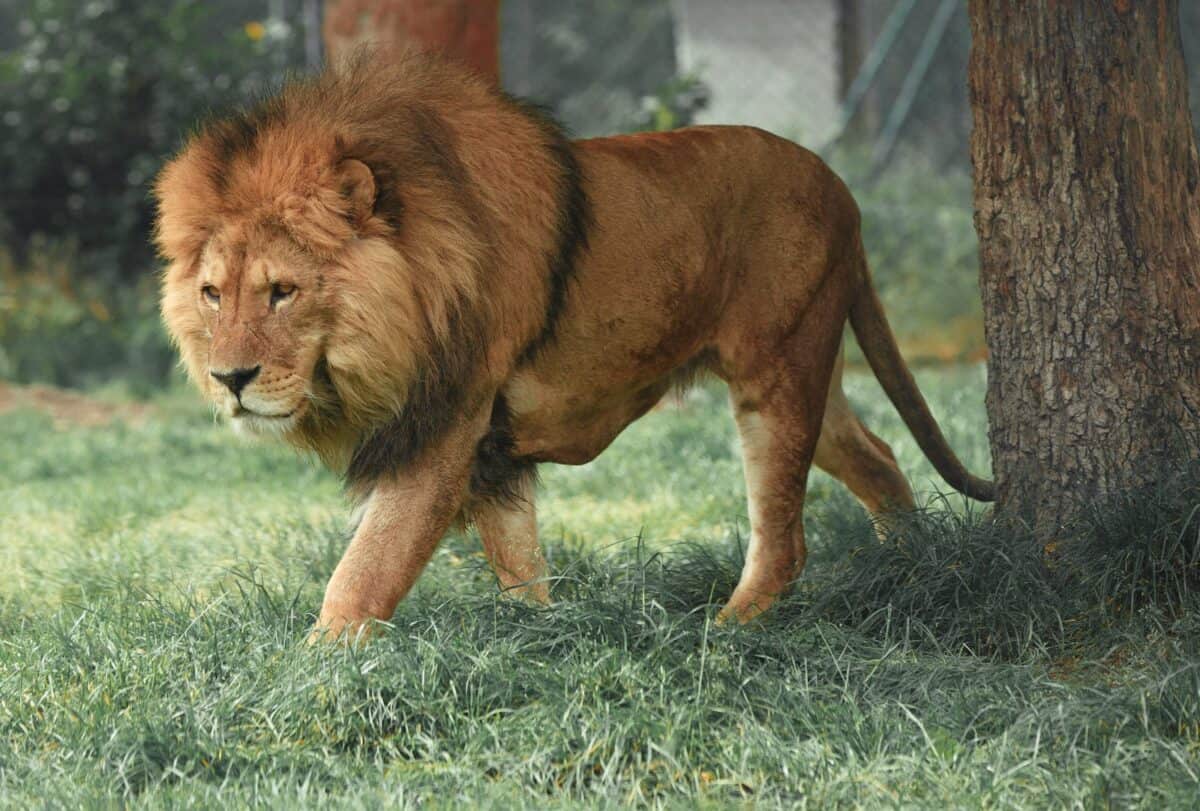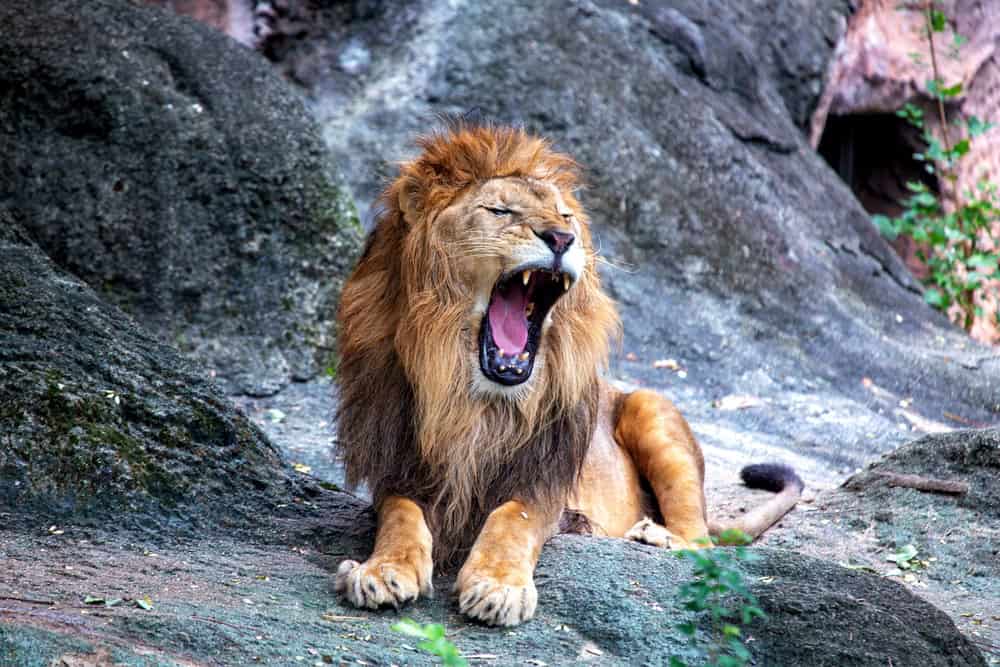Imagine witnessing the raw power of a lion’s hunt—the earth thunders, dust flies, and in a flash, a wildebeest is brought down. But what happens next is even more astonishing: instead of devouring the prize alone, the victorious lion tolerates others at the feast. Why would the king of beasts, fierce and formidable, willingly share its hard-earned meal? The answer is a fascinating story of survival, strategy, and the breathtaking complexity of nature. Animal lovers and wildlife enthusiasts get ready to journey into the heart of the savanna and uncover the real reasons behind this surprising behavior.
11 The Social Web of Lion Prides

Lions are among the most social of all big cats, living in structured groups called prides that can include up to 40 members. Each pride consists of related females, their cubs, and a coalition of males. Unlike the solitary leopard or the elusive tiger, lions thrive because they work together. Sharing kills is one of the most visible expressions of their social bonds. When the hunt ends, it’s not just about feeding; it’s about reinforcing relationships and keeping peace among pride members. This communal dining helps lions maintain the unity and cooperation that set them apart from other predators.
10 The Power of Numbers in Hunting

Hunting in groups gives lions a clear advantage over their prey, especially when targeting large animals like buffalo or zebra. By working together, they can take down animals much larger than any single lion could handle. Sharing the kill is a natural result of this teamwork. Every member of the hunt, from the swiftest lioness to the youngest cub, plays a role. When the meal is shared, each lion benefits from the success of the group, making it more likely that everyone survives the difficult times when food is scarce. This strategy is not just about kindness—it’s about maximizing the pride’s chances of survival.
9 Protecting the Kill from Thieves

The African savanna is a dangerous neighborhood. Hyenas, jackals, and even vultures are always on the lookout for an easy meal. When lions share their kill and eat together, they can defend it more effectively. A lone lion would struggle to protect its dinner from a pack of hungry hyenas, but a group stands a much better chance. By sticking together at mealtime, lions present a formidable front, discouraging would-be thieves and ensuring that their hard work does not go to waste. This protective strategy helps keep the energy invested in the hunt from being lost to opportunistic scavengers.
8 Feeding the Future Generations

Lionesses are fiercely protective mothers, and their cubs rely entirely on the adults for food. When a kill is made, cubs are often allowed to feed alongside the adults, ensuring they receive the nourishment needed to grow strong and healthy. Sharing the kill is a direct investment in the future of the pride. If cubs are well-fed, they are more likely to survive the dangers of the wild, from starvation to predators. This act of sharing isn’t just about the present; it’s about ensuring that the pride’s bloodline endures through the next generation.
7 Keeping the Males Satisfied

Male lions, with their impressive manes and intimidating roars, play a critical role in defending the pride’s territory. However, they are not the primary hunters. When a kill is made, male lions often assert themselves at the carcass, sometimes eating first or even pushing females aside. Sharing food with these powerful males helps keep them strong and motivated to protect the pride. It’s a trade-off: the males provide security, and in return, they are allowed to share in the spoils. This dynamic helps balance the needs of all pride members, even if it sometimes leads to squabbles at dinnertime.
6 Avoiding Deadly Fights Within the Pride

Lions are powerful animals with dangerous claws and teeth, and fights over food could easily turn fatal. Sharing the kill helps to reduce tension and aggression among pride members. A clear pecking order is often observed, with dominant individuals eating first, but everyone gets a chance. By following these unwritten rules, lions minimize the risk of serious injury within the group. This peaceful sharing is a survival tactic in itself, keeping the pride healthy and united rather than weakened by internal conflict.
5 Learning Through Observation and Participation

Young lions have a lot to learn if they want to survive in the wild. Watching adults hunt and feed provides them with essential lessons. When cubs are allowed to join the adults at the kill, they observe how to eat, which parts of the prey to focus on, and even how to behave socially at mealtime. Sharing the kill thus doubles as a teaching moment, helping the next generation develop the skills they will need to one day become successful hunters themselves. These early experiences are invaluable, shaping the future leaders and providers of the pride.
4 Strengthening Family Bonds

Mealtime for lions is about more than just eating—it’s about connecting with family. Licking, grooming, and nuzzling often accompany the sharing of food, reinforcing the social bonds that hold the pride together. These connections are crucial for cooperation during hunts, defense against rivals, and raising cubs. By sharing their kills, lions are constantly strengthening the web of relationships that gives their group strength. This emotional glue is what allows the pride to function as a single, powerful unit rather than a collection of individuals.
3 Responding to Scarcity and Abundance

The savanna can be unforgiving, with seasons of plenty followed by months of hardship. When prey is abundant, there is enough to go around, and sharing comes easily. But even when times are tough, lions continue to share, though competition at the carcass might become more intense. By pooling their resources, pride members ensure that even the weakest or youngest are less likely to starve. This flexibility and willingness to share, even in lean times, is a key reason why lions have survived for thousands of years in such a challenging environment.
2 The Role of Communication at the Kill

Lions communicate constantly while feeding, using vocalizations, body language, and even facial expressions to convey intentions and maintain order. A low growl might warn others not to get too close, while a gentle purr can signal contentment. These subtle signals help prevent misunderstandings and keep the peace during what could otherwise be a chaotic and dangerous time. Effective communication ensures that everyone gets their turn and that injuries are kept to a minimum, making the act of sharing not just a social necessity but a finely tuned dance of survival.
1 The Big Picture of Lion Survival

When you look at the big picture, sharing kills is a smart and necessary survival strategy for lions. It strengthens the pride, protects the kill, nurtures the young, and keeps the peace. Every shared meal is a testament to the intricate balance of power, cooperation, and family that defines lion society. By working together and sharing, lions have carved out their place as one of the most successful predators on the planet. Isn’t it incredible how a simple act like sharing a meal can hold the key to survival in the wild?
Conclusion: Nature’s Strategy in Action

In the wild, every behavior has a purpose, and for lions, sharing a kill is far more than an act of generosity—it’s a vital survival tactic honed by evolution. From reinforcing social bonds and safeguarding meals to teaching cubs and maintaining peace, each shared feast reveals the deep intelligence and intricate social structure of lion prides. It’s a powerful reminder that even the fiercest predators depend on cooperation, connection, and community to thrive. So the next time you see lions gathered around a kill, know that you’re witnessing not just a meal, but the heart of a survival strategy millions of years in the making.
- The Survival Strategy Behind Why Lions Share Their Kills - August 14, 2025
- 10 Cool Animals You Can See in Egypt - August 14, 2025
- 9 Habitats Snakes Thrive In And 3 They Slither Away From - August 14, 2025

